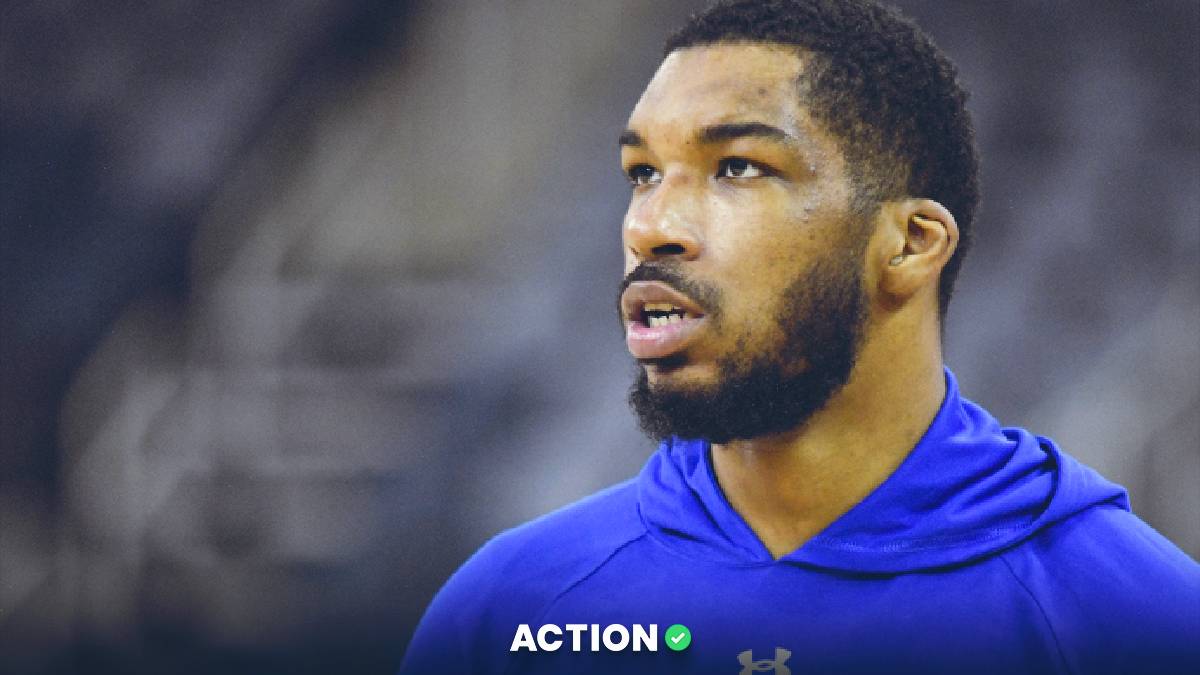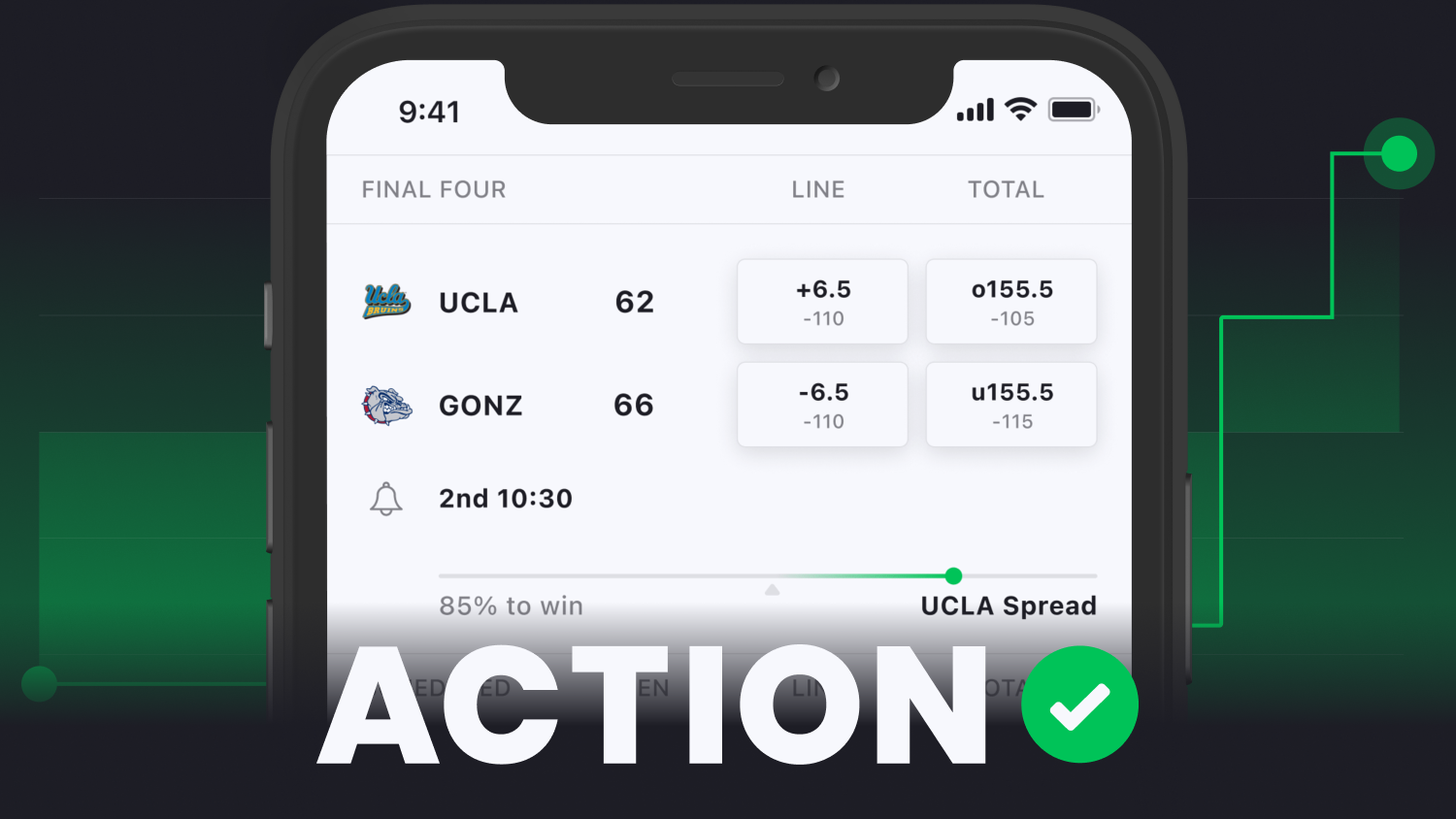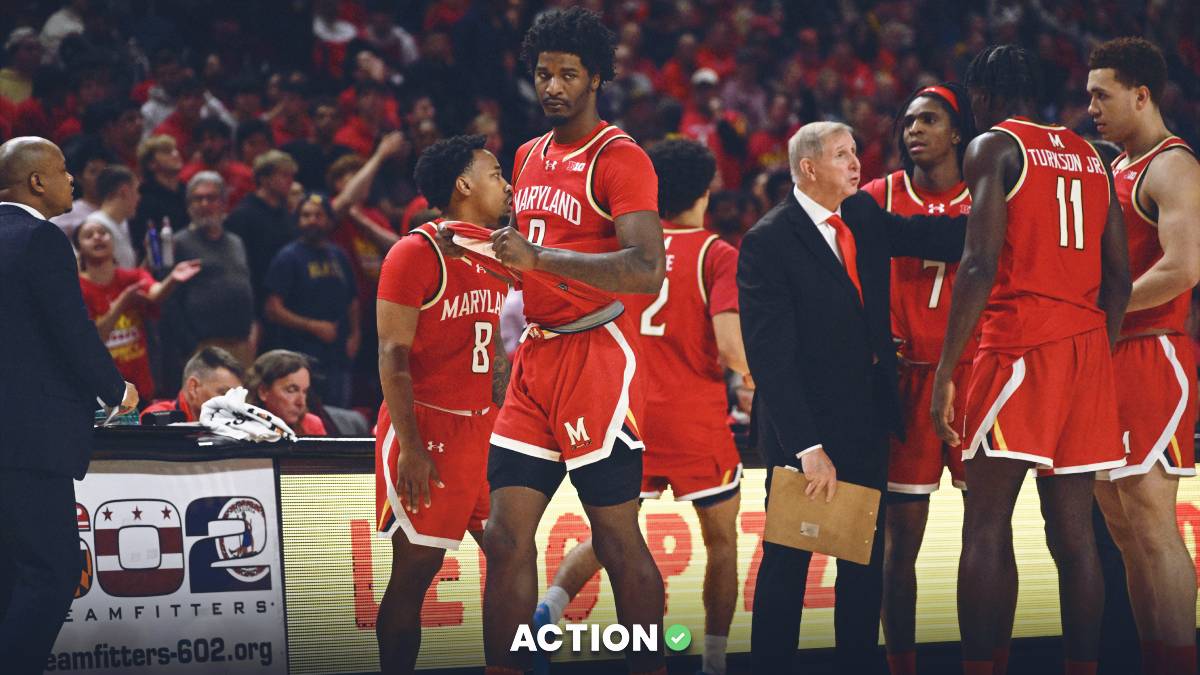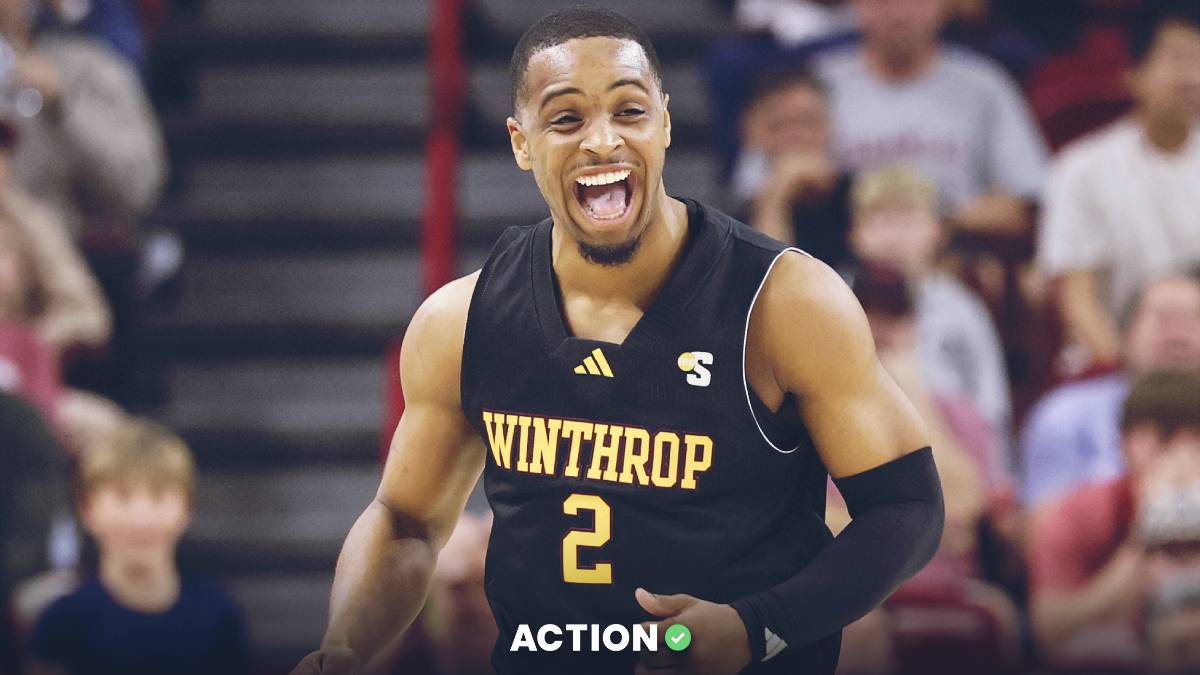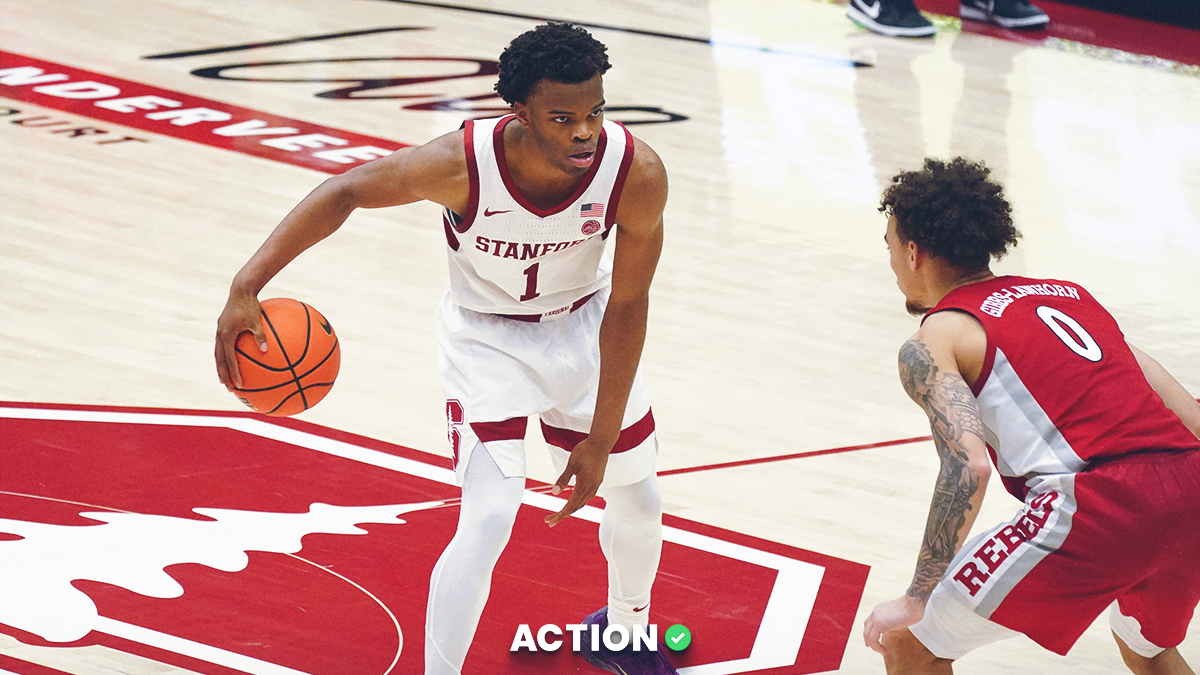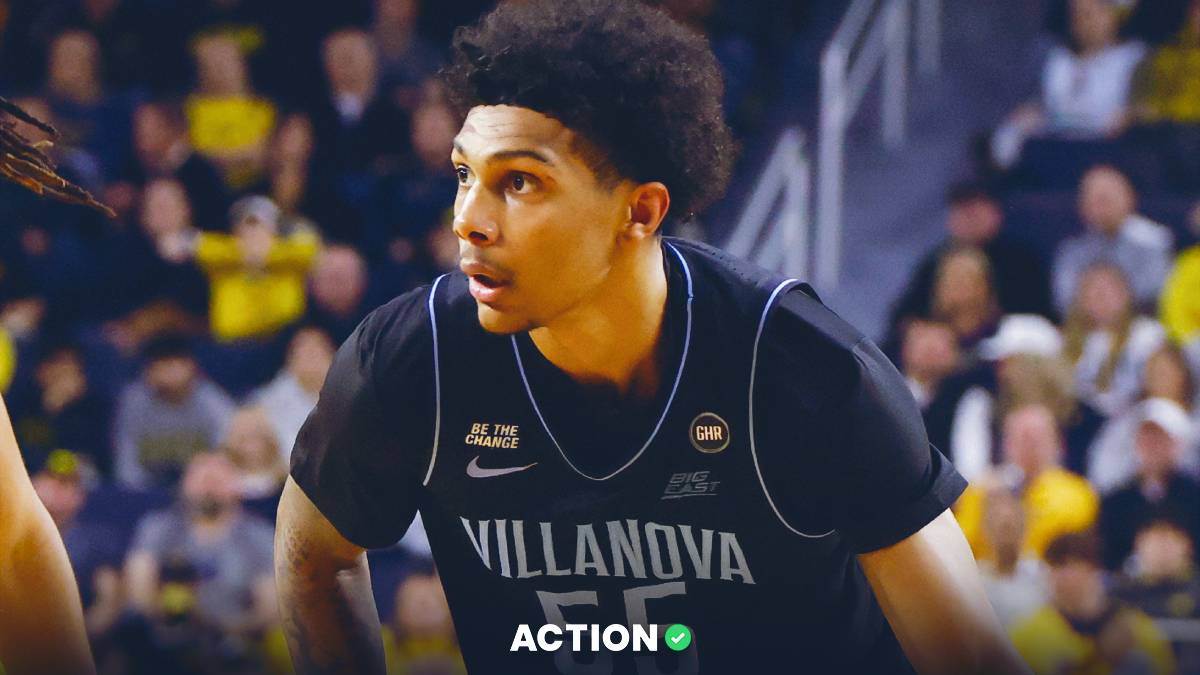Everybody loves the No. 12 over No. 5 upset, and No. 11 seeds actually have a winning record in the first round since 2010 (27-25 overall). However, those are the easier upsets to pick. In fact, we even have an 11-seed (New Mexico) favored in this year's bracket.
So, what about the teams seeded even lower? Well, at least one team seeded 13 or lower has won a first-round game in 14 of the past 15 NCAA tournaments.
Depending on the pool size or bracket contest you enter, your success will usually boil down to nailing the teams that make it through to the Elite Eight, Final Four and — ultimately — the national title.
You can also improve your chances by picking some of the bigger upsets in the first two rounds. While I wouldn't recommend picking any 16-seeds (two combined wins in tourney history, albeit both coming in recent years), we have seen much more success from the 13-15 seeds.
In fact, seven No. 13 seeds have won in the first round over the past seven NCAA tournaments, including Furman in thrilling fashion over Virginia last season.
If you want to get even crazier, we have seen a 15-seed make the Sweet 16 in three straight seasons after only one other 15-seed had ever previously advanced that far. If you recall, Saint Peter's also became the first ever 15-seed to make the Elite Eight — sandwiched in between Oral Roberts and Princeton making their runs to the second weekend.
If you can correctly pick one or two of those early upsets, it will also increase your chances of nailing the teams that make it further.
For reference, here are the all-time records for 13-15 seeds:
- 13 seeds: 32-120 (21.0%)
- 14 seeds: 22-130 (14.5%)
- 15 seeds: 11-141 (7.2%)
Since I'm not entertaining the thought of a No. 16 seed winning — especially this season with a weaker crop — let's focus in on the 12 teams seeded between No. 13 and No. 15 by highlighting each of their chances of pulling off a stunner.
I have ranked them in descending order from least to most likely to pull off an upset.
These aren't simply ranked in the order of my projected lines. Instead, I'm focusing more on the variance of each game and the on-court matchup. For example, a team that shoots and makes a high frequency of 3-pointers and/or plays slower usually has a better chance of an upset due to increased overall variance in a game with fewer possessions.
This is simply an exercise to help you pick an upset or two while also offering insight into some of the lesser-known teams in the bracket for betting purposes.
Generally speaking, my strategy is to pick two upsets from this group each year and hope I get lucky. Let's get into it.
| Game | Time (ET) | |
|---|---|---|
| 2 p.m. (Thursday) | ||
| 9:20 p.m. (Thursday) | ||
| 12:40 p.m. (Friday) | ||
| 7:35 p.m. (Thursday) | ||
| 2 p.m. (Friday) | ||
| 7:10 p.m. (Thursday) | ||
| 7:10 p.m. (Friday) | ||
| 4:15 p.m. (Friday) | ||
| 1:30 p.m. (Thursday) | ||
| 7:35 p.m. (Friday) | ||
| 9:55 p.m. (Thursday) | ||
| 3:10 p.m. (Thursday) |
#12 | No. 15 Long Beach State Over Arizona
Long Beach State made an improbable run last week to win the Big West tournament after its AD announced head coach Dan Monson wouldn't return next season.
Led by the Traore bros (actually not related) inside and the outstanding on-ball defense of Jadon Jones, the Beach are an experienced and physical group. They also had some promising non-conference results when stepping up in class, with upset wins at USC and Michigan to go along with a 12-point loss at San Diego State.
However, it's tough to see Arizona going down to another 15-seed, as it did last season against Princeton. While the Tigers slowed that game down to keep the Wildcats out of transition, that's not really in the DNA of this Beach bunch, as they rank 29th in Adjusted Tempo and in the 98th percentile in transition frequency.
Additionally, LBSU has a very poor transition defense, which spells disaster in a game that might turn into an up-and-down affair. That's where Arizona thrives, as it ranks in the 86th percentile in transition frequency and 85th in efficiency in those possessions, per Synergy.
Plus, the Beach don't really shoot the 3 (347th in attempt rate) and don't connect on many when they do (303rd nationally in 3P%), with Jones as the only really reliable outside shooter. That doesn't help in the variance department.
While they do allow 3-point attempts at one of the 20 highest rates in the nation — which does lead to more variance — they've allowed opponents to connect on 35.1% of their attempts from beyond the arc. Arizona, which ranks in the top 25 in that department, is fully capable of taking advantage from the outside.
Lastly, Arizona sits inside the top 25 in both defensive rebounding rate and free throws allowed, which should limit two of Long Beach State's primary avenues to offense.
The Wildcats can also handle Monson's pressure and live on the offensive glass. Even if Caleb Love has an off night and tries to shoot Arizona out of the game, it should still have no issues advancing to the second round. It likely wouldn't cover in that scenario, though.
ATS Take: Pass

#11 | No. 15 Saint Peter's Over Tennessee
The Peacocks are essentially a brand new team from the one that made an improbable run to the Sweet 16 as a No. 15 seed in 2022. Only Latrell Reid — who played one minute in that tournament — remains on the roster.
However, despite a new coach and roster, this team profiles pretty similarly, albeit just a slightly worse version as you can see by the chart below using KenPom pre-tournament metrics.
On the plus side, Saint Peter's does runs a very methodical offense, which generally helps a potential overmatched lower seed. It still has an outstanding pressure defense, with an abundance of length that ranks 31st nationally in turnover rate.
The Peacocks press at one of the highest rates in the country and will also mix in some zone. However, Tennessee doesn't turn the ball over (36th in turnover rate) and excels against both the press (99th percentile) and zone (85th percentile).
The Vols can also dominate the offensive glass and live at the line against this aggressive defense.
Unfortunately, the Peacocks' offense is extremely limited, ranking in the bottom-15 nationally in effective field goal percentage. They also don't shoot many 3s and aren't great from the outside when they do hoist them, which hurts the chances of a potential Cinderella.
The offensive output gets even worse when you just isolate their possessions against man defense, as they rank 351st nationally in points per possession, per Synergy. That's not a recipe for success against the Vols, who play exclusively man and rank in the 97th percentile in the country in efficiency.
The Peacocks have two redeeming qualities on offense: They can get to the line (52nd) and they can crash the offensive boards (23rd). Those are two potential paths to score on Tennessee, but it's not like Saint Peter's is overly efficient at the line or near the rim (358th in Near Proximity Percentage, per Haslametrics).
That spells disaster against a Tennessee defense that ranks third in mid-range percentage allowed.
Plus, that's assuming Bashir Mason's bunch can actually hold onto the ball. On the season, the Peacocks rank 324th in turnover rate, which could lead to plenty of easy buckets for the Vols, who rank 16th nationally in breakaway points per possession off of steals.
It's worth noting that their best player — Corey Washington — missed seven games, with the Peacocks going 1-6 in those contests. As a result, their metrics are a bit deflated.
Since he returned from injury, they closed the season by winning eight of 10, which followed a four-game losing streak without their power forward. Over that span, they ranked 169th in Overall Adjusted Efficiency (276th on offense, 57th on defense), per Bart Torvik.
For reference, when Saint Peter's stepped up in class this season, it lost by 11, 9 and 31 on the road against Seton Hall, Duquesne and Rutgers, respectively.
Meanwhile, Tennessee went 9-0 against teams ranked outside the KenPom top 100, winning by an average margin of just under 24 points per game.
It's just hard to envision Saint Peter's getting enough buckets to keep this close, especially considering it runs a very methodical offense. That might actually work against it in this matchup, since Tennessee's transition defense has been much worse, ranking in just the 28th percentile compared to 98th in the half-court.
And if Dalton Knecht is on his game, this could get ugly quick.
ATS Take: Pass
#10 | No. 14 Colgate Over Baylor
Yes, I have a No. 14 seed as less likely than two No. 15 seeds to pull off an upset in the first round.
The talent and athleticism gap is just too wide in this matchup, with the Bears featuring three potential future NBA draft picks (and the return of Langston Love, who's arguably the best sixth man in the country) against a Patriot League team.
Colgate did hang with Wisconsin two years ago, but that was against a Badgers squad that wasn't oozing with NBA talent. In their two other most recent appearances in 2021 and 2023, the Raiders lost by 17 and 20 to Arkansas and Texas, respectively.
Those opponents profile much more similarly to this Baylor team. Plus, those Colgate teams had much more prolific offenses than this version. The Raiders really miss Oliver Lynch-Daniels and Tucker Richardson on the perimeter.
Just take a look at Colgate's Adjusted Offensive Efficiency ranks in each of the past four seasons, per KenPom:
- 2021: 53rd
- 2022: 78th
- 2023: 43rd
- 2024: 211th
That's a significant drop-off.
Colgate runs a post-centric offense with a pair of very good five men who can dominate smaller teams in their league. But the task won't be as easy against a high-major, even against a Baylor team that grades out poorly in post defense.
Keep in mind Baylor, which beat every non-power conference team it faced by at least 15 points, has the hardest strength of schedule in the country, while Colgate sits at 340th in that department.
To wit, against the only three tournament teams on its schedule, Colgate lost by 27 at Arizona, 17 at Illinois and 18 on a neutral court against Yale, failing to clear 57 points in any of those three contests.
That doesn't give me much confidence it can hang with Baylor for 40 minutes, even if this Colgate defense is better than it's been in recent seasons.
Fortunately for Colgate, this game won't be played at a super fast pace (Baylor ranks 282nd in Adjusted Tempo), but I just can't see it staying in front of the Bears on the defensive end, where it ranks 258th in Near Proximity field goal percentage, per Haslametrics.
That spells doom against a Baylor offense that ranks in the top 20 in that category and is dominant on the offensive glass.
Lastly, head coach Scott Drew has fixed some of Baylor's defensive issues by utilizing a much higher frequency of zone in recent weeks. Colgate doesn't see much zone in the Patriot League, but it really struggled when Bucknell went to one on 20 possessions in a near-upset in the Patriot League semis.
Without extreme shooting luck, Baylor should eventually pull away comfortably.
ATS Take: Baylor
#9 | No. 15 South Dakota State Over Iowa State
The Jackrabbits can shoot from distance and will get their fair share of 3s up, which is a must against Iowa State's stifling defense that allows the ninth-highest 3-point attempt rate and absolutely nothing at the rim.
The Jacks also have a super compact defense due to a lack of athleticism on the perimeter that allows the second-highest frequency of 3-point attempts in the country. Those are positive factors for the Summit League champ, whose games do tend to have plenty of 3-point variance on both ends.
South Dakota State also doesn't play super slow, ranks outside the top 300 in offensive rebounding and rarely gets to the charity stripe — the latter two being necessities against the Cyclones' aggressive defense.
The Jackbunnies can also be turned over, which is my biggest concern in this matchup. Can Zeke Mayo handle the pressure of Tamin Lipsey and company?
If not, this could get ugly, considering Iowa State leads the country in scoring efficiency off turnovers, which it forces at the second-highest rate nationally. There could be easy buckets galore against the Jackrabbits if they can't handle the non-stop pressure, as they rank 268th in scoring efficiency allowed off turnovers.
If South Dakota State can limit those live-ball turnovers and play slower than usual, there is a path to hang around here. By design, its defense limits chances at the rim (top-50 in NP attempt rate), where Iowa State is uber-efficient.
Also, as a result of not going after offensive rebounds, it does limit transition opportunities.
By limiting turnovers, it could turn this game into a 3-point shooting contest against an Iowa State team that isn't comfortable firing a lot from the outside (303rd in 3PA rate).
The Clones also might be overdue for some potential negative regression on the defensive end. Since Feb. 1, opponents have connected on just 28.8% of their 3-point attempts (on high volume) after making 33.5% prior to that point.
Just take a look at some of South Dakota State's out-of-conference results against a pair of Big 12 teams (which also boast elite defenses) for the potential range of outcomes here.
It lost by only three (without Matt Mims) on a neutral court against a UCF team that can't really shoot. In that game, the Knights went just 7-of-24 from deep, while the Jackrabbits hit 12-of-28.
Conversely, on the road in Manhattan, Kansas State hit 14-of-25 from beyond the arc, while South Dakota State (without Mims again, who missed the first 14 games of the year) hit only 7-of-21. The Wildcats won by 23.
Iowa State should win this game, but the Cyclones come into this game at the very peak of their market value after winning the Big 12 title. That was aided by some extreme 3-point variance and a Houston team that essentially punted the second half of the final, which led to a pair of blowout wins over top-15 teams. That will certainly juice one's metrics.
The Cyclones did blow out every inferior team on their schedule, but they played one of the easiest non-conference schedules in the country (they didn't face a single team ranked between 100-230 outside of league play).
There aren't too many great comps to a team of South Dakota State's caliber. The closest profile is probably West Virginia, which did hang around all game in Ames due to making 10 3s in a lower-scoring affair.
South Dakota State is extremely overmatched athletically and talent-wise. However, if it can turn this into a shooting contest, it has a chance to make Iowa State uncomfortable.
That said, if Iowa State is forcing turnovers and making 3s in front of a partisan crowd in Omaha, the Cyclones could win by 40-plus.
ATS Take: South Dakota State
#8 | No. 15 Western Kentucky Over Marquette
I would have South Dakota State ranked higher than Western Kentucky on this list if not for the injury questions surrounding Tyler Kolek. Apparently Marquette's most important player is good to go, but that definitely adds some uncertainty that works in favor of the No. 15 seed.
However, what doesn't benefit the underdog in this scenario is pace. The Hilltoppers own the nation's highest Adjusted Tempo and transition rate. Increased possessions against a more talented team is not a recipe for success in March.
Plus, Marquette never turns the ball over (28th) and doesn't go after offensive rebounds (278th) in order to get back on defense. As a result, the Golden Eagles do a tremendous job in limiting transition opportunities and grade out elite in those possessions.
WKU does run solid motion in the half-court (void of almost any pick-and-roll, where Marquette is most vulnerable) under head coach Steve Lutz, but Marquette grades out extremely well against everything the Hilltoppers want to do in the half-court.
WKY also rarely shoots 3s and turns it over too much (266th in the country). The latter is extremely worrisome against a Shaka Smart pressure-heavy defense that forces turnovers at a top-20 rate nationally.
To beat Marquette, you have to execute in the half-court by taking care of the ball, running pick-and-roll and finding open shooters from 3 against a defense that allows the 23rd-highest attempt rate from distance.
However, that's just not WKU, which shouldn't be able to get out in transition, where it succeeds.
The Hilltoppers do have a very strong transition and half-court defense, but they can be exploited in pick-and-roll, where Marquette makes its living. They also excel on the defensive glass and can force turnovers.
However, Marquette doesn't really care about offensive rebounds and never turns it over, as I previously mentioned.
WKU also allows a high volume of 3-point attempts, which isn't ideal against a very good outside-shooting Golden Eagles squad.
Looking at each team's respective schedule, Marquette had no bad losses, blowing out almost every inferior team, with the exception of a five-point home win over St. Thomas. However, unlike WKU, the Tommies aren't looking to get out in transition and they take care of the ball, while bombing away from 3 at a high clip.
Meanwhile, WKU didn't play a single power-conference team all season, with its best non-conference wins coming on the road at Wright State and Murray State.
Keep in mind the Hilltoppers — who lost four straight to finish the regular season — benefited from an extremely easy path to a conference title, thanks to a number of upsets. They couldn't have asked for a better path than New Mexico State, Middle Tennessee and UTEP — three teams with a combined 45-54 record.
Lastly, WKU does at least have plenty of high-major talent and length, including four transfers with previous tournament experience:
- Dontaie Allen (Kentucky)
- Brandon Newman (Purdue)
- Rodney Howard (Georgia Tech)
- Babacar Faye (Charleston)
That certainly helps for a group that won't be afraid of the stage.
Keep an eye on the status of sharpshooter Allen, who missed the C-USA title game with an injury, but was at least considered a game-time decision on Saturday.
Ultimately, Marquette, which is more than comfortable playing up-tempo, should find much easier buckets in the half-court and in transition off of turnovers, especially if Kolek is at 100%.
ATS Take: Pass
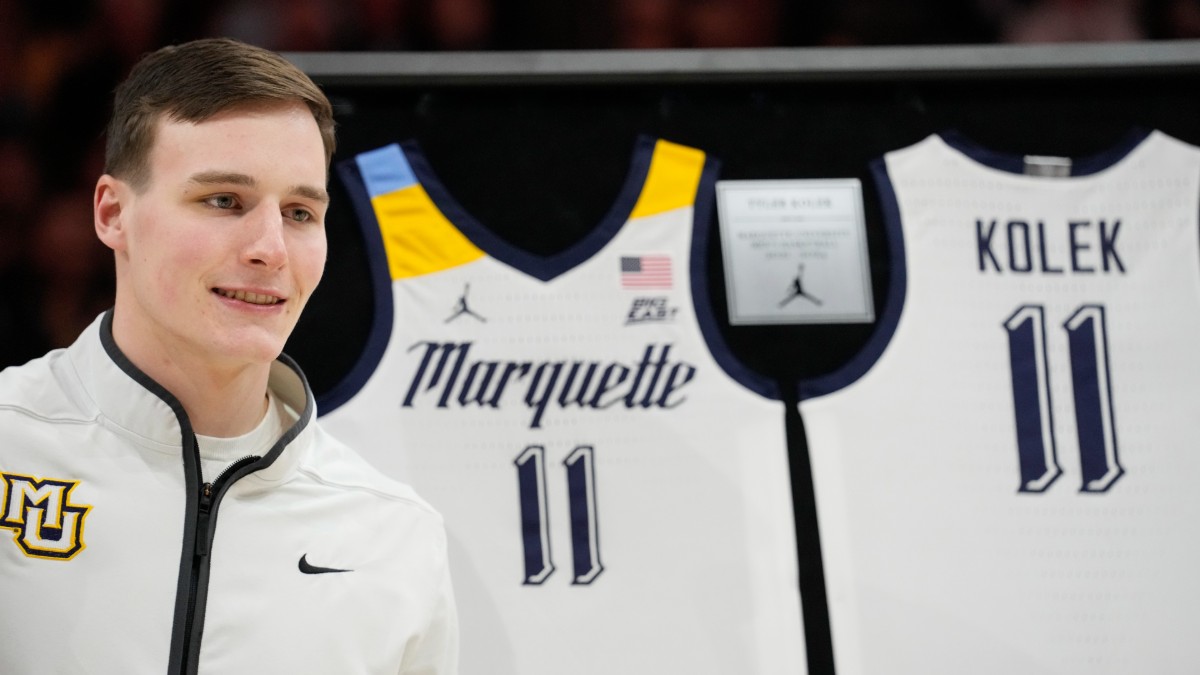
#7 | No. 14 Oakland Over Kentucky
Kentucky has one of the nation's best offenses, but its defense leaves a lot to be desired, which makes it an extremely volatile team.
On the season, the Cats rank fifth nationally in Offensive Adjusted Efficiency but outside the top 100 on the defensive end. No team with a similar profile has ever advanced past the Sweet 16 and many have suffered first-round upsets. No result for Kentucky this tournament would really shock me.
However, this is an ideal matchup for the Wildcats. Oakland runs a lot of its offense through the mid-post area with workhorse Trey Townsend, who should have a productive day.
However, Oakland's offense — which works a lot in isolation — can’t fully exploit Kentucky’s communication and assignment issues on the defensive end, especially off the ball.
On the bright side, Oakland does have some high-variance nature to its profile. The Golden Grizzlies don’t play super fast and shoot a high-percentage of 3s (93rd), led by ultimate chucker Jack Gohlke, who has amazingly attempted 327 3s to just eight 2s on the season.
Additionally, Oakland is one of the most zone-heavy teams in the entire country, which leads to a high-percentage of opponent 3-point attempts. That does check the box of a high-variance characteristic, but the problem is it allows far too many wide open looks.
That’s extremely problematic against Kentucky, which leads the entire country in 3-point percentage and is deadly on open looks, which it generates at a ridiculously high clip.
It’s just hard to envision Oakland getting many stops, unless Kentucky just has a completely nightmare shooting day from the outside.
Although, even in that scenario, Kentucky does boast an enormous size advantage. So, while the Cats aren’t dominant on the offensive glass, Oakland’s zone should allow for plenty of second-chance opportunities and points at the rim.
Oakland did fare pretty well when it stepped up in class this season. In November, it lost by six and 11 on the road against a pair of Big Ten teams: Ohio State and Illinois. It also lost by only eight on a neutral court against Drake and picked up an impressive road win at Xavier.
Meanwhile, Kentucky did lose to UNC Wilmington at home and it also went to overtime against Saint Joes — two teams in Oakland’s weight class.
Kentucky has an astronomical talent advantage with future NBA draft picks littered across its rotation, but if the Cats can’t make 3s and Oakland scores at will against Kentucky’s leaky defense, then all of the pressure will shift to Kentucky.
ATS Take: Pass
#6 | No. 13 Vermont Over Duke
Take a look at my colleague (and America East guru) Tanner McGrath's analysis of this matchup, as he can do a much better job breaking this one down than I can.
However, I'll share a few quick thoughts on the Catamounts, who haven't won a tournament game since 2005 — their only one in program history — when T.J. Sorrentine famously hit one from the parking lot to upset Syracuse.
March 18, 2005: 13-seed Vermont, beats 4-seed Syracuse 69-57 in OT in the first round of the NCAA Tournament. Gus Johnson on the call.
“Sorrentine[ Hit that one from the parking lot!”
pic.twitter.com/5uu4Ug1OLH— This Day In Sports Clips (@TDISportsClips) March 18, 2024
Vermont eventually won that game in overtime, which shouldn't be a surprising score for a 13-seed pulling off an upset. The Cats grinded that game down to a halt, making it a half-court battle and winning the 3-point variance.
That's the best chance for these seeds to pull off a stunner.
Well, this Vermont team — which is experienced and super-well coached under John Becker — plays at one of the slowest paces in the entire country, ranking 349th in Adjusted Tempo. It also never turns it over (11th) and hardly ever goes after offensive rebounds (345th) in order to get back in transition at all costs.
Those are all positive traits for a potential Cinderella.
Additionally, Vermont will hoist up a ton of 3s (35th in 3PA rate), which creates much-needed variance in a one-and-done scenario. Now, it isn't great in that area (33.5%), but it does have a number of capable options who can get hot.
The problem is Duke has a very good perimeter defense and forces teams to work in the mid-range, which isn't really Vermont's forte.
However, the Blue Devils have struggled at times to defend cutting action (33rd percentile), which Vermont utilizes as much as any team and does so with elite efficiency (88th percentile).
On the other side of the ball, Vermont's extremely stout defense is its calling card. The well-schooled unit is seemingly always in the right place, rarely gambling for steals nor fouling, while gobbling up defensive rebounds at the eighth-highest rate in the nation.
All three of those characteristics are key against the Blue Devils. who want to get to the rim at a high rate. However, that's no easy task against the Catamounts with defensive stalwart Ileri Ayo-Faleye patrolling the paint.
His inside presence — and Shamir Bogues' blanketing perimeter defense — will play even against a high-major, but I do worry about how Vermont will handle Kyle Filipowski as the roll man. He could have a huge day in this matchup.
For what it's worth, Duke did show vulnerability at times against inferior teams, most recently losing to NC State in the ACC tournament and suffering two road regular-season losses to Georgia Tech and Arkansas.
Meanwhile, Vermont did beat a pair of top-100 tournament teams in Yale and Charleston (on a neutral court), but lot by 22 on the road against Virginia Tech, which is a bit concerning.
Lastly, it's worth noting Vermont has a few lingering injury questions, namely to senior Matt Verretto — a very capable shooter who the Cats will need at full strength.
This won't be an easy task against a Duke club that owns a colossal talent and athletic edge, especially on the perimeter. However, Vermont should get its wish of a half-court battle against a Duke team that doesn't play particularly fast.
Plus, Vermont won't beat itself, nor give up too many free points at the line or on the offensive glass.
If it can avoid too many scoring droughts and benefit from 3-point variance — which won't be easy against a much better shooting club — Vermont has a good enough defense to give it a chance to become the third seed of 13 or lower to beat Duke since 2012.
ATS Take: Vermont
#5 | No. 13 Yale Over Auburn
After winning the SEC tournament in dominant fashion by beating three tourney-bound teams by a combined 57 points, Auburn got a raw deal with a No. 4 seed. In fact, the Tigers are No. 4 overall at KenPom at the moment.
Prior to this past weekend, Auburn didn't beat a single tournament team away from home, including a road loss at Appalachian State. However, on the flip side, all 24 of its regular-season victories came by at least 11 points, with only Texas A&M staying within 15 points.
When the Tigers are on, they're very good.
Does that mean Yale stands no chance? Not necessarily, The Bulldogs actually check a lot of boxes of a potential upset candidate.
We've certainly seen teams from the Ivy give power-conference programs fits in the first round by slowing the game down and running great offensive sets. Princeton is the most recent example, as the Tigers stunned the college basketball world by advancing to the Sweet 16 last season.
So, which boxes does Yale check?
Well, firstly, the Bulldogs are a very well-coached team under James Jones. Additionally, they rank…
- 327th Adjusted Tempo (increases variance)
- 308th in 3-point attempt rate allowed (also increases variance)
- 13th in defensive rebounding rate
- 18th in turnover rate
- 84th in foul rate
Those last three are especially important against Auburn, which possesses a scrambling, heavy-pressure defense, in addition to an offense that lives at the free-throw line and on the boards.
Yale also has a seven-footer in Danny Wolf, who can shoot from 3, which could potentially cause conflict for Johni Broome, one of the best defensive players in the country.
Additionally, John Poulakidas and August Mahoney are deadly shooters from beyond the arc. Both will need to knock down a bunch for Yale to compete in this one, especially since both will be major liabilities on the defensive end of the floor.
That said, Auburn's defense usually takes away everything from 3 and at the rim, ranking top-12 nationally against both.
In order to score consistently against Auburn, you need to hit mid-range jumpers, which Auburn does allow a high-frequency of by design (and yet still ranks in the top-20 nationally in mid-range percentage).
Yale does have a few players who can take advantage of that area on the floor. Bez Mbeng and Matt Knowling lead a Yale offense that ranks 81st in mid-range field goal percentage.
The Bulldogs want to work through the post and get to the rim, but that won't work here. They can still work the ball down low, but they will need to use cutting action to generate open looks — primarily from the mid-range — and hope they are falling at a high clip.
Now, it's not all roses for the Bulldogs, who will be at a massive disadvantage in the athletic and talent departments. Although, the same held true for Princeton against Arizona in the first round last year.
They also don't have a great transition defense, which spells trouble against Auburn in the open court.
Yale also doesn't draw many fouls (although Auburn will still probably commit many) and can really struggle when it gets to the stripe. Giving away free points is not an ideal formula for an underdog to stay close with a significantly more talented team.
The Bulldogs also don't excel in getting second-chance points, ranking 351st in potential quick points off offensive rebounds (per Haslametrics). You really need that avenue against Auburn's aggressive defense that allows for opportunities for opponents to grab misses.
Yale must slow this game down to a halt and hit its mid-range and outside jumpers, while hoping Auburn's erratic guards chuck (and miss) bad shots from the perimeter.
If you're looking for opponent comparisons, Yale lost by 15 on the road to Kansas and Gonzaga this season.
ATS Take: Yale
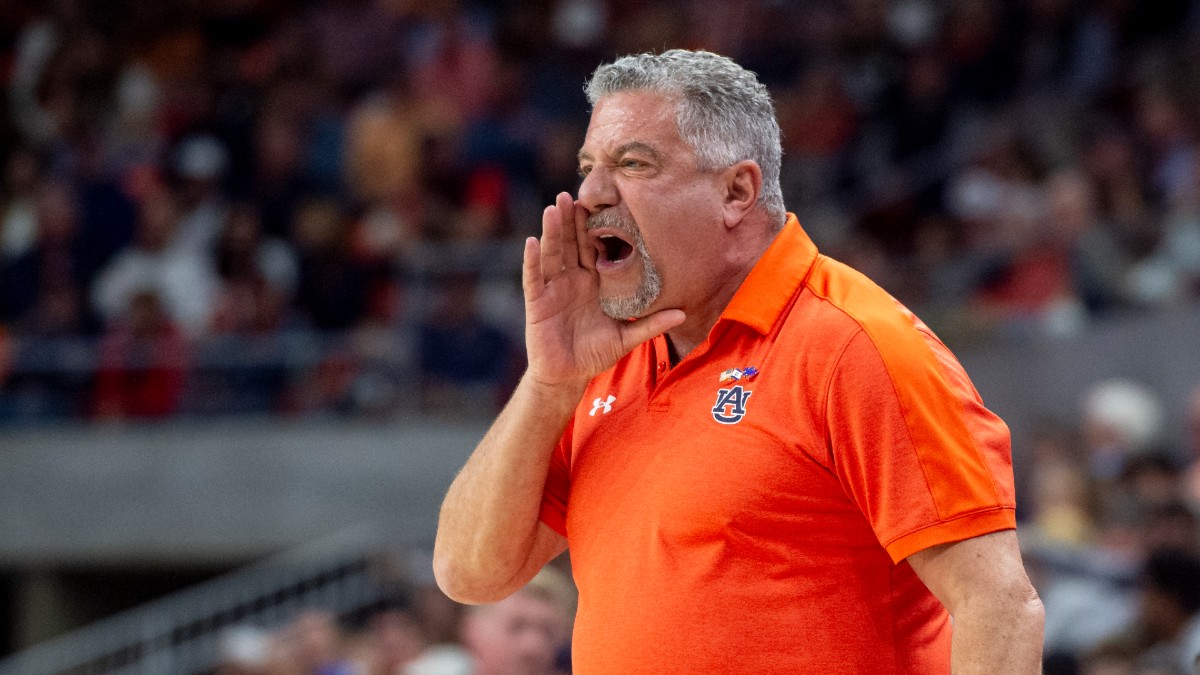
#4 | No. 14 Akron over Creighton
Akron, which stumbled down the stretch of the regular season, found a way (thanks in large part to a mental blunder by Kent State in the final seconds) to make it back to the Big Dance for a second time in three years.
Two years ago, as a No. 13 seed, Akron put a scare into UCLA in a 57-53 loss. That season, the Zips had one of the slowest tempos in all of college basketball and were facing a methodical Bruins squad, which is why I had them ranked so highly that season as a potential upset candidate.
Well, this year, the Zips aren't playing as slow (268th vs. 353rd in Adjusted Tempo). However, the Jays aren't overly fast-paced (207th).
If head coach John Groce — who owns a career 7-1 ATS mark in the NCAA tournament — can slow this game down even more, the Zips will increase their chances of pulling off an upset. It's certainly in his DNA.
Akron shoots a high-frequency of 3-pointers, which usually is a positive for a potential upset. However, it only makes 32.1% of those attempts (271st), even though point guard Greg Tribble can get white hot from the outside (41.2% from deep).
The Zips are overdue for some positive regression after shooting 28.8% since Feb. 1 compared to 34.4% prior — although, in fairness, their defensive splits have been a bit lucky over that stretch.
That said, Creighton just doesn't give up anything from 3 or at the rim, with 7-footer Ryan Kalkbrenner manning the paint of its drop defense.
In order to score on the Jays, you have to operate in the mid-range and/or have a big man who can shoot. Well, the Zips actually possess both, with a fairly efficient mid-range game and a 5-man in 6-foot-9 Sammy Hunter, who shoots 37% from distance.
Even matchup-nightmare power forward 6-foot-7 Enrique Freeman (who they work through in the post at a very high rate) and 6-foot-6 wing Ali Ali are capable of knocking down jumpers.
The Zips also aren't looking to attack the rim, live on the offensive glass, force turnovers or get out in transition. That's a positive in this particular matchup, since Creighton doesn't allow opponents to do any of those things.
There's a path to success for the Zips on both ends of the floor, especially if this turns into a purely half-court game.
Lastly, from a scheduling perspective, Akron didn't face any power-conference teams, but it went 2-4 against top-150 teams during a strong non-conference slate:
- W by 6 at South Dakota State
- L by 3 on a neutral vs. Utah State
- L by 20 on a neutral vs. Drake
- W by 15 vs. Bradley
- L by 2 at UNLV
- L by 1 on a neutral vs. St. Bonaventure
Outside of the Drake blowout, that's a very solid crop of non-conference results, especially when you consider the Zips were without Ali — who averages 15.6 points per game — for three of those losses.
Meanwhile, Creighton didn't have any bad losses, but it did get blown out on a neutral court against Colorado State and suffered a 15-point loss in a semi-road game against UNLV. The Jays also suffered home losses to a pair of non-tourney Big East teams in Butler and Villanova.
Akron has one of the most experienced rosters in the country, with a number of starters who almost pulled off that aforementioned upset of UCLA. This crew won't be afraid of the stage or opponent, which certainly helps.
While Kalkbrenner will certainly get a number of easy buckets inside (just like Great Osobor did for Utah State), Akron possesses an outstanding perimeter defense (99th percentile guarding jump shots, per Synergy), which is critical against a Jays club that launches 3s at a top-10 rate in the country.
That should help keep this relatively close.
ATS Take: Akron
#3 | No. 13 Charleston Over Alabama
You want 3-point variance? Well, then this is your game of the first round. These are two teams who fire up triples at top-25 clips nationally and have major defensive holes.
Both of these teams play at a fast pace. That isn’t ideal for a large underdog, but the 3-point variance is the trump card. The total is set at 172, which would be the highest of any tourney game since 1995.
Alabama also fits the profile of a vulnerable high seed (similar to Kentucky), with its elite offense (top-10) and vulnerable defense.
Now, I will say that the Tide — who rank last in Haslametrics’ momentum metric — are at the bottom of their market value. They’ve also been extremely unlucky of late on both ends of the floor in terms of 3-point variance. Conversely, Charleston has been running extremely hot from deep.
Therefore, it wouldn’t surprise me if Alabama caught fire from the perimeter. If that’s the case, it could be lights out for the Cougars, especially if they aren’t hitting 3s at a high rate. If they're missing, Alabama should get easy buckets in transition and at the rim, where Charleston is extremely vulnerable.
Lastly, Alabama didn’t have any bad losses, but it did lose by 11 on a neutral court to Ohio State, when the 3-point variance worked in favor of the Buckeyes. The Tide mainly blew out all of the inferior competition it faced, but the 3s were falling early and often in non-conference play.
Meanwhile, Charleston’s results against the only three tournament teams it faced aren’t pretty:
- L to Vermont by 9 on a neutral
- L to Duquesne by 18 on a neutral
- L by 16 at FAU
FAU and Duquesne both scored 90 on the leaky Cougar defense.
In conclusion, this Alabama defense certainly has issues that Nate Oats simply can’t fix with the pieces he has available. And no matter what, this game will have an abundance of 3-point variance, which is why Charleston landed at No. 3 on the list.
ATS Take: Charleston
On March 11, the Tar Heel State launched North Carolina sports betting fully online. Sign up at NC Sportsbooks today.

#2 | No. 13 Samford Over Kansas
Samford doesn’t really fit the mold of a major upset candidate based on its profile.
The Bulldogs play what’s known as “Bucky Ball” under head coach Bucky McMillan, which means they play super fast (14th in Adjusted Tempo) by looking to get out in transition, while applying extended zone pressure defensively.
They do, at least, shoot (and allow) an extremely high percentage of 3-pointers. That creates added variance and could equal the playing field against Kansas.
It also doesn’t hurt that they have capable shooters all over the court who led an offense that shot an outstanding 39.3% from beyond the arc during the season (eighth nationally).
Five players in the rotation shoot at least 38%, including Achor Achor, who could have success pulling Hunter Dickinson away from the rim.
However, Samford is extremely undersized (349th in average height), so I’m not sure how it slows down Dickinson. Additionally, it’s not generally smart to get into a transition battle (with increased possessions) against Kansas, which is deadly when it runs.
Kansas also grades out as elite against the zone due to strong ball movement, despite not being a prolific 3-point shooting team. However, it’s worth noting the Jayhawks have some major looming positive regression on the offensive end.
Conversely, the Jayhawks have struggled against the press (per Synergy), despite having a number of reliable ball handlers.
Also, there's injury uncertainty on the Kansas side, with both Dickinson and Kevin McCullar Jr. dealing with nagging issues. Nobody really knows how healthy both are.
It’s also worth noting that this game will be played in altitude, which could benefit Samford — one of the deepest teams in the country (third in bench minutes). In contrast, Kansas really lacks depth, especially if it's not at full strength.
In a potential track meet, that could become an issue in the second half in Salt Lake City
For what it’s worth, Samford did lose by 53 and 10 on the road to start the season against Purdue and VCU, respectively, which marked its only two contests against top-100 opponents. That’s not very encouraging, but Kansas definitely wasn’t the same team away from Lawrence this year.
While the Jayhawks didn’t suffer any bad losses out of conference, they did lose four games to non-tourney Big 12 teams, all away from Allen Fieldhouse.
While Samford’s pace is not ideal — nor is a transition war against Kansas — there's enough uncertainty here — along with plenty of potential 3-point variance — for things to get weird, especially if Kansas isn’t at full strength.
ATS Take: Lean Kansas
#1 | No. 14 Morehead State Over Illinois
Yes, a No. 14 seed comes in with the top spot in the potential upset rankings.
Morehead State checks all of the boxes of a potential Cinderella candidate, as I tweeted right after it won the OVC Championship.
This Morehead team has every single ingredient you look for in a team to pull off an upset or two in the dance
— Stuckey (@Stuckey2) March 10, 2024
The senior-laden Eagles are a very well-coached team under Preston Spradlin, who will likely get a much bigger job in the near future.
They also play at a very slow pace, ranking 335th in Adjusted Tempo.
Additionally, they shoot 3s at a top-25 rate nationally, which they make at a respectable 35.3% clip.
That perimeter offense also comes from a number of players, including steady point guard Drew Thelwell. In addition, wings Jordan Lathon and Kalil Thomas combined to shoot over 40% on just under 350 3-point attempts.
I’d also be remiss if I didn’t mention OVC Player of the Year Riley Minix, who averages over 20 points per game and a hair under 10 rebounds. The previous NAIA All-American is a matchup nightmare for any team. The 6-foot-7 Minix has impeccable footwork and can score from anywhere on the court.
Rounding out the starting rotation is seven-footer Dieonte Miles. The Xavier transfer mans the paint of Morehead’s deep drop defense.
Morehead doesn't have a lot of depth, but it's extremely talented, long and athletic for a mid-major. It's also not over-reliant on any one player on the perimeter.
From a matchup perspective, Morehead is extremely proficient on the glass, which is key against the Illini. It can also limit them in transition, where the Illini are deadly.
Additionally, Illinois doesn’t turn teams over (360th), which is massive for the Eagles (their biggest flaw on that end of the floor is turnover issues).
Illinois has supreme talent, especially on the offensive end thanks to Terrence Shannon Jr. and Marcus Domask. But it profiles as the classic higher-seed-upset-candidate with an elite offense (fifth in Adjusted Efficiency) and vulnerable defense (93rd).
Interestingly, those are almost identical numbers to where Iowa finished in 2022. The Hawkeyes, who ran through the Big Ten tournament after an explosion from Keegan Murray (similar to what we just saw from Shannon and Illinois), ended up losing in the first round to slower-paced Richmond.
Morehead will have to stay out of foul trouble by hoping Shannon, who could certainly go off here, isn’t getting every call near the bucket.
And while the non-conference blowout losses to power-conference teams (outside of a one-point loss at Indiana) aren’t overly encouraging, this is a matchup of a lower seed that checks all of the boxes of an upset candidate versus a higher seed that checks all of the boxes for an early exit.


